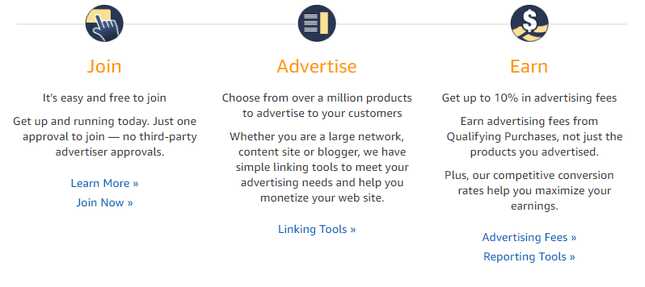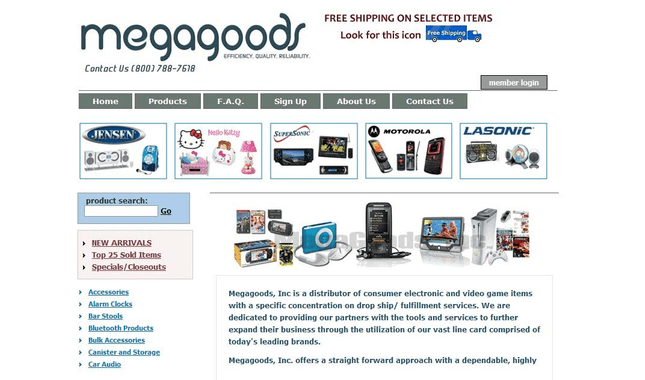How to Start an Online Store Without Inventory
If you click to purchase a product or service based on our independent recommendations and impartial reviews, we may receive a commission. Learn more
With an ever-growing market value, it comes as no surprise that ecommerce is becoming an incredibly desirable space. This trend was further ignited by the pandemic, which acted as a catalyst for ecommerce growth.
With so many new online stores popping up every day, it can come as a shock to many just how much work and planning goes into launching an ecommerce business. From sourcing products and building your online store, all the way to planning shipping and marketing – it can all get a little overwhelming!
That’s why in this article, we’re walking you through the benefits – and potential pitfalls – of starting an online store without any inventory. So, if you’re keen to get started with selling online – but don’t want the hassle of storing and shipping products – this article will be the ideal fit for you.
Is Starting an Online Store Without Inventory Smart?
Before we dive into some of the ways in which you can start a store without inventory, let’s take a look at the reasons why this may (or may not) be a good option for you:
| Pros | Cons |
| Save money in storage costs Streamline shipping Free time to focus on business growth Smaller upfront investment required Increased ‘stock’ potential Tap into other business expertise No need for permanent premises | Lower profit margins Potentially unreliable suppliers More difficult to maintain quality control Less flexibility in product offering |
Options for Starting Your Online Store Without Inventory
There’s more than one way to start selling without inventory. In this section, we’ll outline the pros and cons of each of the potential methods, as well as highlighting which scenario they’re best suited for.
Print on Demand Products
Starting a print-on-demand store is a great way to sell products online, whilst only creating those products when they’ve been ordered. This approach works for any printed products such as:
- Art prints
- T-shirts
- Mugs
- Books
- Corporate gifting
You may start a print-on-demand store by buying your own printer and printing orders when they come in. However, this approach does require you to keep blank materials – including blank paper, t-shirts, and mugs – in stock. A better approach for those who want to keep zero inventory would be to outsource to an external printer, and simply send them your orders once you receive them.
This is a popular option used by many brands, so there are several dedicated suppliers to choose from. Many of these companies allow you to set up your own store, with orders going directly to them. They’ll then pay you a commission on each sale.
How much you pay/get paid depends on the product being printed, as well the supplier you select. For example, UK-based t-shirt printing company Teemill typically pays sellers 25% of the sale of a basic men’s t-shirt, with the other 75% going towards taxes, materials, printing costs, staff wages, factory costs, fulfillment fees, and company profit.

Top Tip!
Digital Products & Services
Digital products and services are a great way to sell online, without the need for inventory. In fact, this is one of the only methods where you won’t see a smaller profit margin as a result of not managing your inventory yourself.
Digital products and services can include a wide catalog, which includes:
- Educational products (courses, diet plans, recipe books)
- Entertainment (music, movies, podcasts)
- Licencing
- Membership
- Services (tutorship, personal training)
Apart from in the case of selling services, most digital products are unlimited – and can be sold online as many times as you like/are able to. This opens up a huge potential for growth, with very little cost beyond initial product creation.
However, proving the value of digital products can be tricky – particularly in niches where it’s easy to find similar, free resources. Digital products can also often be easily copied and redistributed with little to no cost.

Top Tip!
Using a Third-Party Logistics (3PL) Company
Third-party logistic companies are a smart way to do away with the hassle that comes with dealing with your own inventory. Typically, these companies will allow you to outsource everything to do with logistics: from inventory management and warehousing to fulfillment.
Unlike some of the other methods we outline in this guide, using a 3PL offers you great flexibility in sourcing the products you believe will best serve your customers.
However, this method can also be expensive. This is especially true for start-up businesses that are yet to grow, as many 3PLs will charge a flat fee for storage – not to mention fulfillment costs.
Top Tip!

Fulfilment by Amazon (FBA)
Fulfillment by Amazon (FBA) is becoming an increasingly popular choice for those who want to run an ecommerce store, but without the drawbacks of managing inventory. In many ways, FBA is like using a 3PL company, except that Amazon also provides you with the platform to sell your products on.
Here’s what the process looks like:
- You source the products you want to sell on Amazon
- You have those items delivered to the Amazon warehouse
- Amazon stores those products
- When you sell a product on Amazon, it’ll pack and deliver the product on your behalf
This saves you the time and effort not only of managing your own inventory, but of building your online store, too. However, convenience comes at a price, and Amazon will charge you for storing your products and fulfilling orders, as well as a commission for selling on its site.
How much Amazon charges per item will depend on a range of factors, such as selling price, size, and weight. You can find all the information on how much you can expect to pay for FBA on Amazon Seller Central.
Start an Affiliate Store
Unlike most of the options we have discussed in this article so far, starting an affiliate store doesn’t rely on you sourcing products yourself. Instead, it requires you to find other sellers who are willing to pay you a commission when you sell products on their behalf.
For example, you may start an affiliate store where you sell books on behalf of other sellers. Each time a customer places an order, it’ll go directly to the seller, who’ll then pay you a percentage of the sale.
Because affiliate stores take the hassle of sourcing products off the table, they allow you to focus exclusively on marketing your store, and driving engaged traffic. Affiliate stores also have low barriers to entry, as you don’t need to purchase stock ahead of launching your store.
However, there are some downsides to starting an affiliate store. The first and most obvious is the fact that you’ll only see a small percentage of each sale – so you’ll need to focus on quantity selling to see a healthy profit. You’ll also need to find trustworthy suppliers, as their customer service will reflect on your business.
Top Tip!
Use Dropshipping
In many ways, dropshipping is similar to 3PL, because your dropshipping partner will send orders on your behalf. However, whereas a 3PL company deals exclusively in order fulfillment, a dropshipping partner is usually also the product manufacturer or distributor of those products.
Let’s take the same bookstore example as above. When dropshipping, each order made through your ecommerce store would go directly to the book publisher, who would package and send the order on your behalf.
This approach saves you time and effort, as you don’t have to send your sourced products to a separate fulfillment company. It can also help minimize the time you spend managing your stock, and ensuring that you always have enough to meet demand.
However, there are downsides to dropshipping. Unlike using a 3PL company – where you get to select the best products – dropshipping offers far less flexibility. Also, if you want to offer multiple products, you may need to make dropshipping arrangements with multiple manufacturers or distributors, which can make things a little more complicated.

Want To Know More About Dropshipping?
- Find out How To Start a Dropshipping Business with our helpful guide
- Want to know what the 10 Best US Dropshipping Suppliers are? Click the link to find out!
- Don’t know the difference between Dropshipping and Eccomerce Fufillment? Our Dropshipping vs Ecommerce Fulfillment: What is the Difference? guide easily breaks it down for you
How to Create an Online Store Without Inventory: Summary
In this guide, we’ve shown you exactly how you can start an online store without any inventory. Which option is best for you depends on your individual goals, how much work you want to put in, and how much profit you’d like to make.





2 comments